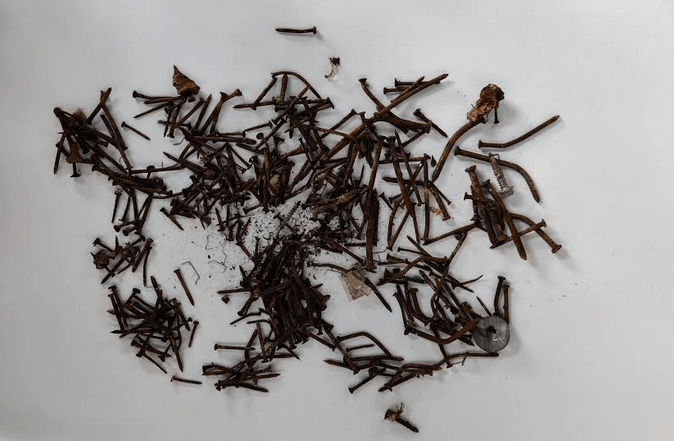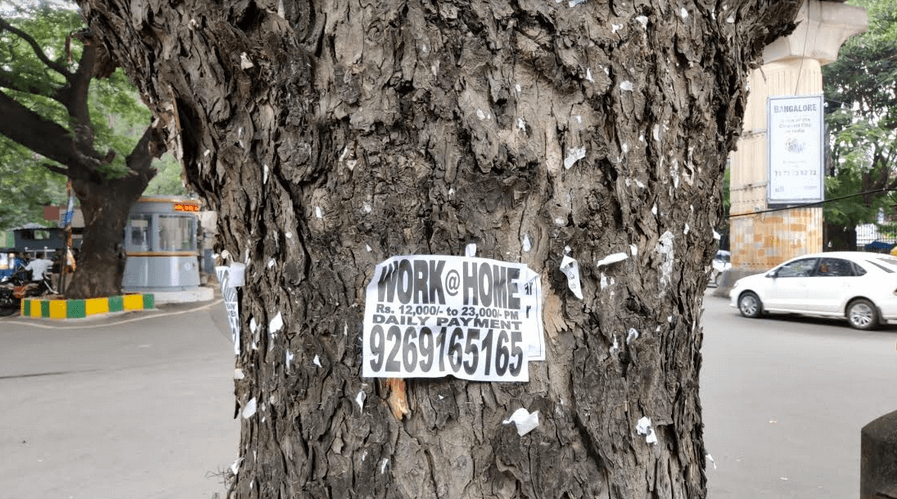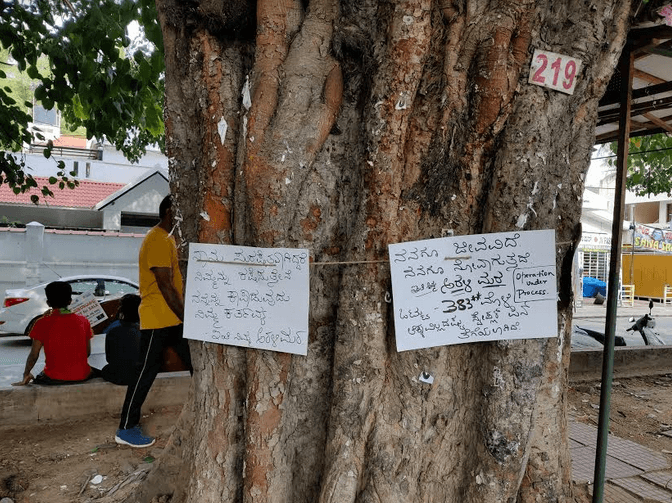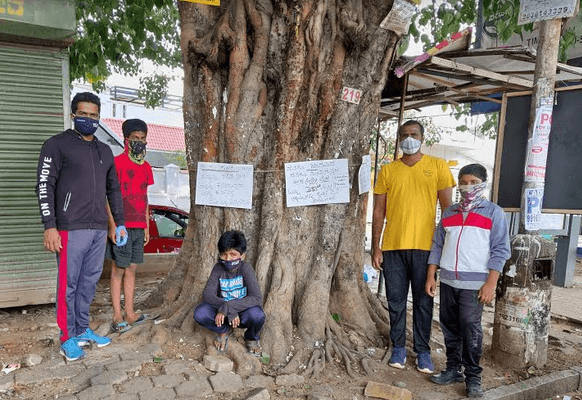By Aratrika Dey
The other day, Bangalore Political Action Committee (B.PAC) member Raghavendra Poojari tweeted that he and a group of friends single-handedly removed 383 nails and over 2000 stapler pins stuck to a peepal tree near Vijayanagar bus stand… there are still many more to be removed. “Every time I went on morning walks or jogging, I would come across trees that had nails and pins,” Poojari told Residents Watch. What was assumed to be a minimal number turned out to be more than 500 nails and 5000 stapler pins stuck to the peepal tree near Vijayanagar bus stand. Therefore, their task is still not over.
Are nails really harming the trees?
Over time, the stuck advertisements wear away or fall off, but the nails and stapler pins remain stuck to the tree’s bark. A particular comment on the post claimed nails to be good for the trees. On the contrary, hammering a nail or stapling a pin into the tree is intrusive and will cause harm. The bark protects the tree against diseases and rot, but anything that pokes holes into that defense is going to weaken the tree by allowing harmful organisms. Significant harm, however, depends on the overall health and age of the tree, and the quality and number of nails that are being hammered into the bark. In this case, the nails and pins were both rusty and huge. “I am talking to scientists and experts, and also researching on my own for a scientific solution,” says Poojari. “When holes are poked into trees, they are left open for insects – we need to find something to heal the damage.”
Who is the culprit here?
The workers who stick these advertisements are not the ones at fault. “We caught a boy one day and asked why he was stapling posters, and he said that he was working because he got a hundred bucks to do this work,” says Poojari. “The people who are hammering nails into the trees come at 6am, collect a hundred posters, and go off to work. The institutions and organizations paying for these advertisements and notices to go up are the ones responsible.”
What action is being taken?
No official complaint has been lodged, apart from a few tweets tagging the concerned authority. Several other residents’ have tweeted their experience of removing nails from trees, and their grievances. While some are simply applauding Poojari’s work and imploring the authorities to take note of these offenses and charge the offenders. Civic activist Kavitha Reddy noted that ‘political ads’ were banned from being stapled onto trees after the Kill Bills campaign. However, trees are still being violated and despite having filed complaints, there is no response.
The forest department of the BBMP has advised Poojari to lodge a complaint with the Commissioner (Forest Department, BBMP) and promised action. Poojari plans to meet the commissioner, but adds: “This cannot be done by the BBMP alone. It has to be made into a public movement; the residents have to put in the effort.”
The solution to the problem
According to the Karnataka Open Places (Prevention of Disfigurement) Act, 1981, anybody disfiguring public places or open places can be subjected to penalty or a jail sentence. The BBMP has the power to impose fines on offenders littering the trees with posters, notices, and adverts. “When you impose fines of say Rs 1000 or Rs 2000, or someone is given punishment, it will deter the others,” says Poojari. “This initiative needs to be covered widely by the media!” He and his friends plan to keep a note of the people committing these offenses, the vendors, and also involve civic agencies in their quest to nail this issue.
It is the citizen’s call
The kinds of advertisements that can be found on these trees range from catering services, food deliveries, rental notices for paying guest accommodations, hostel facilities, and the like. Raghavendra implores, “It must become a citizen’s movement if anybody finds such trees in front of their houses or PGs. Don’t wait for the BBMP. Start working on your own! Use a hammer or screwdriver and remove the nails and pins.”







